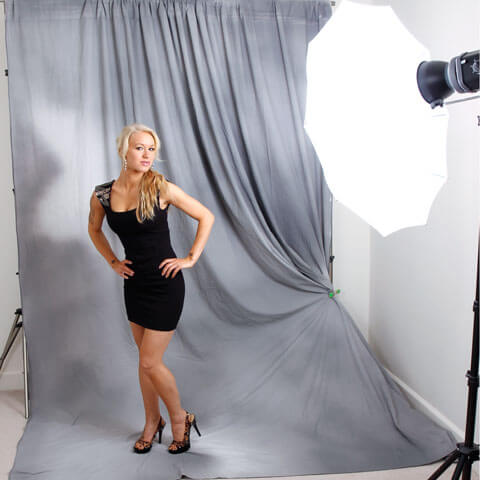Studio Basics: The Magic of Umbrellas
Today’s Post by Joe Farace
 Umbrellas are the simplest and most inexpensive light modifier and that makes them the most popular. When working in the studio, there’s an important rule to remember:
Umbrellas are the simplest and most inexpensive light modifier and that makes them the most popular. When working in the studio, there’s an important rule to remember:
The closer a light source is to a subject, the softer it is. The converse is also true because the smaller and further away from the subject the light is, the harder it becomes. In addition, the larger a light source is, the softer it will be; smaller sources will be less soft.
Photographic umbrellas look and act just like a rain umbrella, except ] light is bounced into them—or shot through them— creating a big, soft light source. Umbrellas are passive devices and don’t care what kind of light you bounce into them. The light can come from a electronic flash, LED or a fluorescent light source.
 Notes on photo: Shot with Olympus EM-5 and Olympus 12-50mm f/3.5-6.3 lens (at 34mm) and an exposure of 1/125 sec at f/9 and ISO 200.
Notes on photo: Shot with Olympus EM-5 and Olympus 12-50mm f/3.5-6.3 lens (at 34mm) and an exposure of 1/125 sec at f/9 and ISO 200.
That “size matters” rule is important because a bigger umbrella will produce broader, softer light for your photographs. Umbrellas come in sizes from small to large and some are even collapsible allowing you to create a compact lighting kit for the road. The main reason to select anything smaller than the biggest one you can find is space.
I like to place umbrellas high but larger umbrellas can bump into ceilings on location applications, so something smaller is needed. Tip: When working in a tight space, I place umbrellas high to keep shadows from falling on the background. You must be careful that the umbrellas is not so high that the subject loses light in their eyes.
The Magic of Umbrellas is the name of a workshop that Joe conducts. Click the link to get more information about it, keeping in mind that private workshops for one-on-one interaction and learning can be arranged to fit your schedule.



